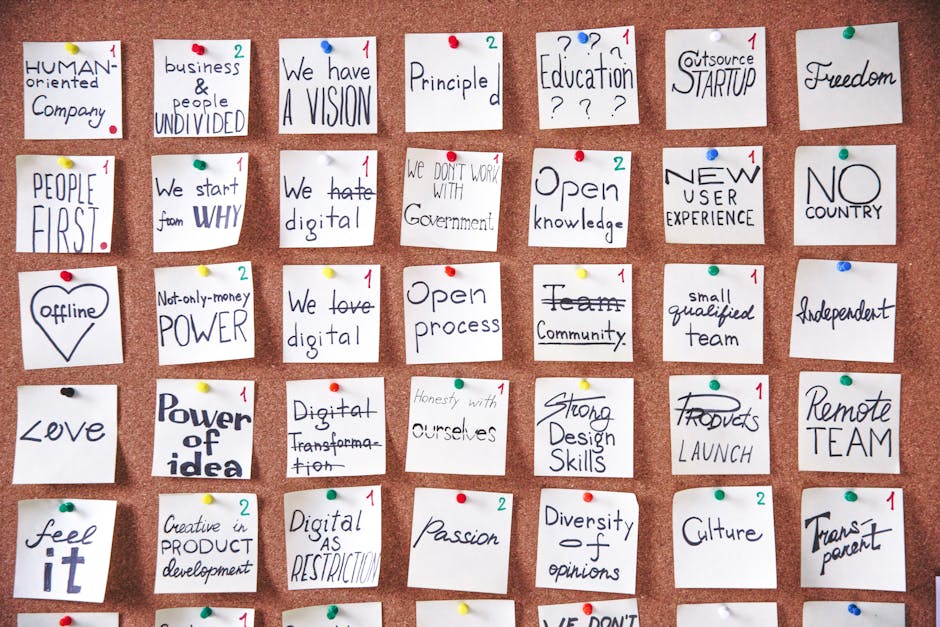Getting Your Edtech Start-up Ahead With MVP Development
Did you know that the global edtech market is projected to reach a value of $404 billion by 2025? With such a vast and ever-growing industry, it’s crucial for your edtech start-up to stand out from the competition.
And one effective way to do that is through MVP development. Minimum Viable Product (MVP) development allows you to quickly validate your product idea, gather user feedback, and make necessary improvements before investing significant time and resources.
In this article, we will guide you on how to get your EdTech start-up ahead with MVP development. We’ll show you how to:
- Identify your target audience
- Define your MVP goals and features
- Design a user-friendly interface
- Build and test your MVP
- Gather feedback
- Iterate based on the input received
- Finally, scale and expand your EdTech start-up.
By following these steps, you can ensure that your product meets the needs of your target audience while staying ahead in this competitive market. So let’s dive in!
Key Takeaways
- Identify target audience through user personas and market research
- Tailor product to meet specific needs of target audience
- Prioritise essential features and set realistic expectations
- Gather user feedback and iterate to create a robust edtech solution
Identifying Your Target Audience

Are you ready to figure out who your target audience is and start building an edtech product that they’ll absolutely luv? Identifying your target audience is a crucial step in the development of any successful start-up.
By defining user personas and conducting market research, you can gain valuable insights into the needs, preferences, and pain points of your potential customers.
Defining user personas involves creating profiles that represent different types of users who’d benefit from your edtech product. These personas should be based on real data and reflect the characteristics of your target audience.
Conducting market research allows you to gather relevant information about the educational technology landscape, including competitor analysis, industry trends, and customer feedback.
By understanding who your target audience is, you can tailor your product to meet their specific needs. This won’t only result in a more effective solution but also increase customer satisfaction and loyalty. For example, if your target audience consists primarily of K-12 students, you may need to focus on creating engaging content with interactive features that cater to their learning styles.
Once you’ve identified your target audience through user personas and market research, it’s time to move on to defining your MVP goals and features. This next step will help you prioritise what functionalities are essential for launching a minimum viable product that meets the initial needs of your users.
Identifying your target audience through user personas and conducting market research is vital for building an edtech start-up that resonates with its intended users. By understanding their needs and preferences upfront, you can develop a product that addresses their pain points effectively.
Now let’s explore how defining MVP goals and features can further propel your start-up towards success.
Defining Your MVP Goals and Features

Crafting a clear vision and selecting essential features is crucial when defining the goals for your minimum viable product (MVP) in order to build a successful edtech start-up. Setting realistic expectations and prioritising features will help you create an MVP that meets the needs of your target audience while also being achievable within your resources.
To start, it’s important to have a clear understanding of what you want to achieve with your MVP. What are the main problems or challenges that your product aims to solve? Identifying these goals will guide the development process and ensure that you stay focussed on creating value for your users.
Once you have established your goals, it’s time to prioritise the features that will help you achieve them. A helpful technique is creating a table with two columns: ‘Must-Have’ and ‘Nice-to-Have.’ In the ‘Must-Have’ column, list the features that are absolutely necessary for your MVP’s functionality. These should be the core elements that address your users’ pain points directly. In contrast, the ‘Nice-to-Have’ column includes additional features that would enhance user experience but are not critical at this stage.
By setting realistic expectations and prioritising features, you ensure that your MVP focuses on delivering essential value while also being feasible within your resources. This approach allows you to launch quickly and gather valuable feedback from early adopters, which can then inform future iterations of your product.
In the subsequent section about designing a user-friendly interface, we will discuss how to translate these defined goals and features into an intuitive and engaging user experience.
Designing a User-Friendly Interface

Designing a user-friendly interface is essential for creating an engaging experience that keeps your target audience hooked and eager to explore your product.
By improving accessibility and enhancing user experience, you can ensure that users find it easy to navigate through your edtech start-up and fully utilise its features.
To improve accessibility, consider factors such as font size, colour contrast, and navigation options. Use clear and legible fonts with appropriate sizes to make reading effortless for all users. Additionally, choose colour schemes that have sufficient contrast between text and background to aid readability, especially for those with visual impairments. Incorporating alternative text descriptions for images allows visually impaired individuals to understand the content.
Enhancing user experience involves designing intuitive interfaces that aline with users’ expectations. Simplify complex processes by breaking them down into smaller steps or providing helpful tooltips along the way. Intuitive navigation menus and well-organised content make it easier for users to find what they need quickly.
Consider incorporating interactive elements like buttons, sliders, or drop-down menus to engage users actively. These elements offer a sense of control and interactivity while keeping the interface clean and uncluttered.
Lastly, prioritise mobile responsiveness as more people access edtech platforms through their smartphones or tablets. Ensure that your design adapts seamlessly across different screen sizes without compromising useability.
Designing a user-friendly interface is crucial in improving accessibility and enhancing the overall user experience of your edtech start-up. By considering factors like font size, colour contrast, intuitive navigation, interactivity, and mobile responsiveness during the design process, you can create an enjoyable platform that keeps your audience engaged and eager to explore further.
Moving on to building and testing your MVP will allow you to bring these design concepts into reality.
Building and Testing Your MVP

Once you finally start building and testing your MVP, get ready for a rollercoaster ride of bugs, glitches, and endless frustration. User testing is a crucial step in the process of building an edtech start-up. It allows you to gather valuable feedback from your target audience and ensure that your product meets their needs.
Product validation is another important aspect of building an MVP. This involves validating your idea and ensuring that there is demand for your product in the market.
During the building phase, you may encounter various challenges. Here are five things to keep in mind as you navigate this stage:
-
Be prepared for unexpected issues: Building an MVP can be unpredictable, so expect to encounter bugs and glitches along the way. Stay calm and approach each issue with patience.
-
Prioritise functionality over aesthetics: While a visually appealing interface is important, focus on developing core features first. Make sure your product works well before investing too much time on design.
-
Test early and often: Conduct user testing throughout the development process to identify any useability issues or pain points. This will help you make necessary improvements before launching.
-
Iterate based on feedback: Use the feedback gathered during user testing to iterate and refine your product. Continuously improve upon its strengths and address any weaknesses.
-
Keep an eye on competition: Stay informed about what other edtech start-ups are doing in the market. Analyse their strategies and learn from their successes and failures.
By gathering feedback and iterating based on user testing results, you can steadily refine your MVP into a robust education technology solution that meets the needs of both students and educators alike without losing sight of its impact potential within today’s ever-evolving educational landscape.
Gathering Feedback and Iterating

Navigating the rollercoaster ride of building an MVP involves continuously gathering feedback and iterating based on user testing results to create a robust education technology solution. User engagement is crucial for the success of your edtech start-up, and gathering feedback is essential to understand how users are interacting with your product. By listening to their needs and concerns, you can make informed decisions about product improvements.
One effective way to gather feedback is through user testing sessions. This allows you to observe how users navigate your platform, identify pain points, and uncover areas that need improvement. Encourage participants to provide honest feedback by creating a safe and non-judgemental environment. Take notes during these sessions and record any valuable insights or suggestions for future iterations.
Another method for collecting feedback is through surveys or questionnaires. These can be sent out after users have had some time to explore your MVP. Ask specific questions about their experience, such as ease of use, satisfaction with features, and suggestions for improvement. Analyse the data collected from these surveys to gain insight into trends or patterns that could inform your next iteration.
To organise and analyse all the feedback received, consider using a table like the one below:
| Feedback Category | Description |
|---|---|
| Useability | Ease of use |
| Features | Suggestions for new features |
| Performance | Speed and reliability |
| Design | Aesthetics and user interface |
Use this table as a framework for categorising different types of feedback so that you can prioritise areas for improvement in subsequent iterations.
By continuously gathering feedback from users and implementing necessary changes based on their input, you can create a product that truly meets their needs. As you iterate on your MVP, keep in mind that scaling and expanding your edtech start-up will require strategic planning and execution.
Scaling and Expanding Your EdTech Start-up

Now that you’ve gathered feedback and iterated on your edtech start-up, it’s time to focus on scaling and expanding your business. This is a crucial step in taking your start-up to the next level and reaching a wider audience.
One way to do this is through forming strategic business partnerships. Business partnerships can be mutually beneficial for both parties involved. By partnering with established companies or organisations in the education industry, you can tap into their existing customer base and gain access to new markets. These partnerships can also provide valuable resources, expertise, and support that can help accelerate the growth of your start-up.
In addition to forming business partnerships, implementing effective marketing strategies is essential for scaling and expanding your edtech start-up. Marketing plays a crucial role in creating awareness about your product or service and attracting new customers. It’s important to identify your target audience and tailor your marketing efforts accordingly. Utilise various channels such as social media, email marketing, content creation, and search engine optimisation to reach potential customers effectively.
To stay ahead in the competitive edtech market, it’s vital to continuously evaluate and refine your marketing strategies based on data-driven insights. This will help you identify what works best for your target audience and optimise your efforts accordingly.
Overall, scaling and expanding an edtech start-up requires careful planning, strategic business partnerships, and effective marketing strategies. By focussing on these areas, you can position yourself for success in the ever-evolving world of educational technology.
Frequently Asked Questions
How can I find investors for my EdTech start-up?
Finding investors for your edtech start-up can be a daunting task. Start by finding mentors who can guide you through the process and help you make connexions. Additionally, creating partnerships with established companies can attract potential investors and provide credibility to your venture.
What are the best marketing strategies to promote my EdTech product?
To promote your edtech product, consider influencer partnerships and content marketing. Collaborating with influential individuals in the industry can help raise awareness and credibility. Additionally, creating valuable content that addresses your target audience’s needs can attract and engage potential customers.
How can I ensure the security and privacy of user data in my EdTech platform?
To ensure the security and privacy of user data in your edtech platform, use data encryption methods to protect sensitive information. Obtain user consent for data collection and clearly communicate how their information will be used to build trust with your audience.
What are the legal considerations and regulations to be aware of when launching an EdTech start-up?
To ensure legal compliance when launching an edtech start-up, you must be aware of regulations related to user privacy, data protection, and intellectual property. Protecting your users’ data and respecting copyright laws are crucial steps in establishing a trustworthy platform.
How can I effectively monetise my EdTech product and generate revenue?
To effectively monetise your edtech product and generate revenue, you can implement various monetisation strategies such as offering freemium subscriptions, licencing content to other platforms, selling data or analytics, creating paid certifications or courses, and partnering with educational institutions. These revenue generation models can help sustain your business while providing value to your customers.
Conclusion
In conclusion, dear reader, you’ve embarked on a journey to propel your EdTech start-up towards success. Just as a skilled captain navigates through treacherous waters, you’ve identified your target audience and set clear goals for your MVP.
With an intuitive interface as your compass, you’ve built and tested your prototype, gathering valuable feedback along the way.
Now it’s time to hoist the sails of scaling and expansion, embracing new horizons in the realm of education technology.
May your voyage be prosperous and transformative!
Contact us to discuss our services now!
